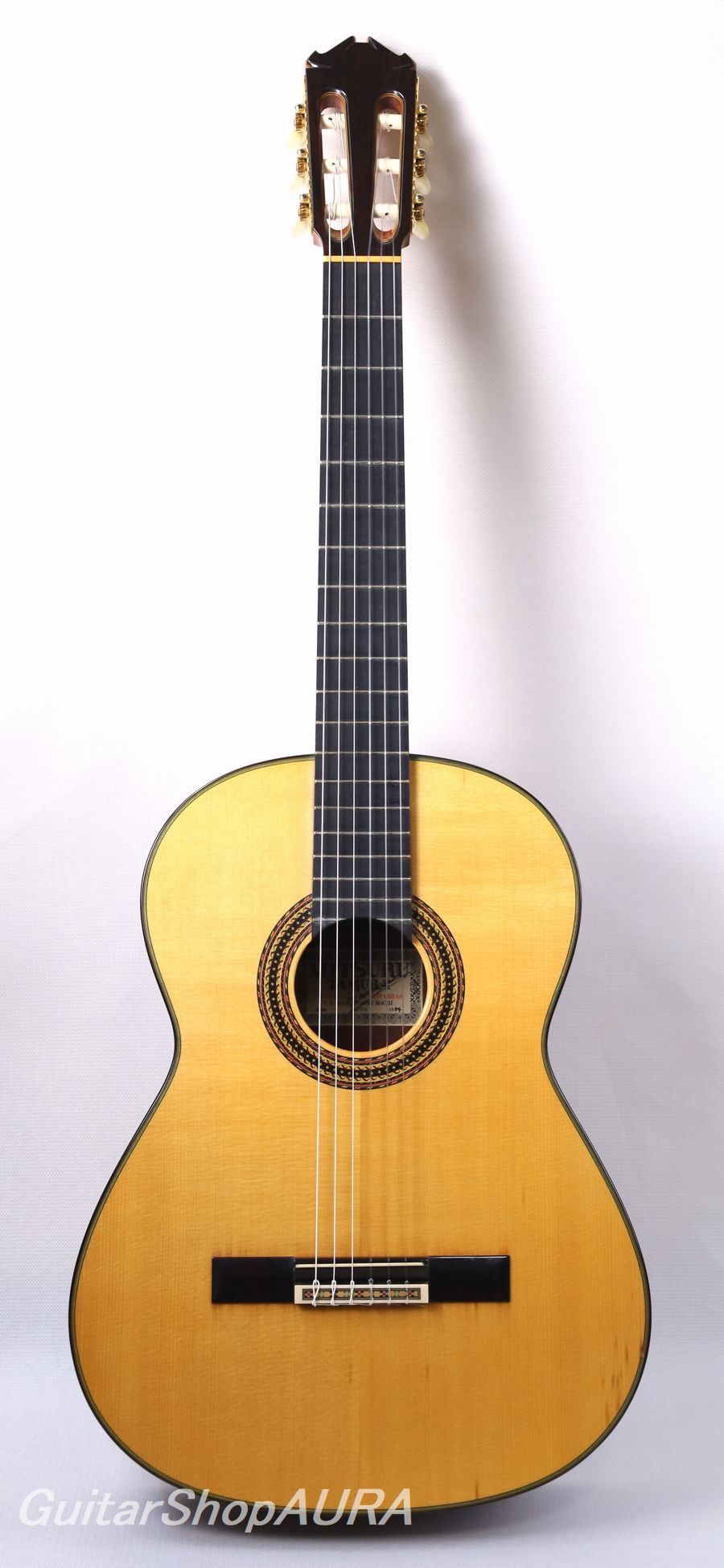
| Instrument | Mitsuru Tamura |
| Category | Japanese Classical Guitars 〔Vintage〕 |
| Number/Model | No.3000 |
| Scale length | 650mm |
| Country | Japan |
| Year | 1984Year |
| Top | Solid Spruce |
| Side&Back | Solid South American Rosewood |
| Condition※ | 8 |
| List price | INQUIRE |
| Price (tax included) | Please Inquire |
| option | with Hardcase |
Click to enlarge the photos below
Neck:Cedoro
Fingerboard:Ebony
Finish:Polyurethan
Tuning Machine:GOTOH
String height:1string 2.7mm/6string 3.4mm
[Profile]
Mitsuru Tamura, born in 1928 in Kochi, Shikoku, is a respected luthier and guitarist. Along with his brother Hiroshi, he helped shape one of Japan's most iconic vintage guitar brands. After working at the Tamura Guitar Workshop, founded by his brother in 1952, Mitsuru established his own workshop in 1966.
Their work played a key role in the rise of classical and flamenco guitars in Japan during the 1960s. At a time when Spanish guitar craftsmanship was still emerging in Japan, their guitars—especially those from the 1960s and early 1970s—are praised for their authentic, Spanish tone. Although production became more industrial in the 1970s, their work remains highly regarded for its balance of Spanish tradition and Japanese craftsmanship.
[Description]
This 1984 Mitsuru Tamura Model No. 3000 is a high-quality guitar made with South American rosewood for the back and sides. It has a clear, powerful tone with great balance and dynamic range.
There are minor cosmetic marks, including light dents and finish discoloration on the lower soundboard, but no significant scratches or playing wear. The back and sides show minimal wear, and the guitar is in excellent condition overall. The neck and frets are also in great shape. The neck has a slim D-profile, with a string action of 2.7mm (1st string) and 3.4mm (6th string) at the 12th fret, and the saddle height ranges from 1.0 to 1.5mm.
The internal bracing includes a harmonic bar above the soundhole, with additional braces on the lower side and a treble bar extending diagonally. The six fan braces are symmetrically arranged, with two closing bars at the bottom. The resonance is slightly above G#, producing a vibrant tone.